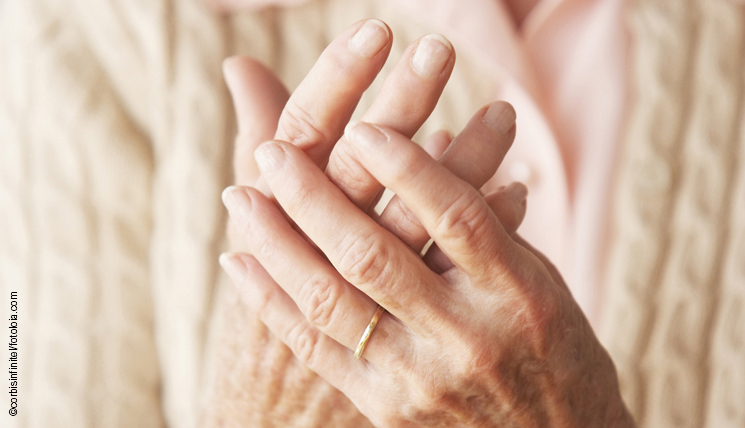“Rheumatism” is the term commonly used for the violent and dragging pains in joints, muscles and bones which can make everyday life a misery. Actually, this term describes a large number of individual diseases which are referred to by medical experts as “diseases of the rheumatic form”.
Rheumatoid arthritis (RA) is one of the most frequent inflammatory rheumatic diseases, with a worldwide prevalence of approximately 0.5 to 1%. Although mostly adults of older age are concerned, the disease may also affect children. It manifests as a chronic inflammation of the joints and tendon sheaths which may lead in the further course to a destruction of the adjacent cartilage, tendons, and bones. Usually, first symptoms of RA occur in the left and the right body side symmetrically, in regions which are remote from the body centre, such as hand and finger joints. They include swelling, redness and morning stiffness. Without therapy, this leads to deformation of the joints, severe pain and decreased mobility, which may lead to serious limitations in everyday life. The individual development of RA may differ significantly. Typically, the complaints occur in episodes and are accompanied by general disease symptoms such as weakness and fatigue.
RA development is always triggered by an autoimmune reaction. The exact underlying causes are still unknown. It is considered a fact that there are hereditary as well as environmental risk factors (e.g. smoking tobacco and certain infections) which interact in a complex manner and stimulate the autoaggressive reaction of the immune system towards the own motoric apparatus, in a complex interaction.
Diagnosis and therapy of rheumatoid arthritis
Inflammation of the joints can be diagnosed using imaging techniques, e.g. radiography. The duration of the complaints as well as the number of affected body regions are decisive for the diagnosis of RA. Moreover, international classification criteria [1], composed by the American College of Rheumatology (ACR) and the European League Against Rheumatism (EULAR), recommend the determination of rheumatoid factors (RF) and antibodies against citrullinated proteins (ACPA). Clinical and laboratory findings are weighted according to a point system. Depending on the final score, the diagnosis RA is either excluded, uncertain or definitive.
RA cannot be cured, but symptoms can be minimised by a comprehensive therapeutic approach. Patients are usually treated with medication to contain inflammation and pain. Sometimes even surgery needs to be performed. At the same time, mobility and strength of the joints should be stimulated by physio- and occupational therapy. In some cases, a special diet may also ease symptoms and help the patient.
[1] Aletaha D et al., 2010, Arthritis Rheum 62(9): 2569–2581.

My dad has noticed that he is starting to have some trouble getting around the home and his joint is really creaky in the morning so it can be kind of painful for him. He really wants to talk to a professional so that he can start getting treatments for it that will help him improve and allow him to be more mobile. It was interesting to learn about how medicine can help him control the pain and inflammation and he might need to go to physio and occupational therapy.